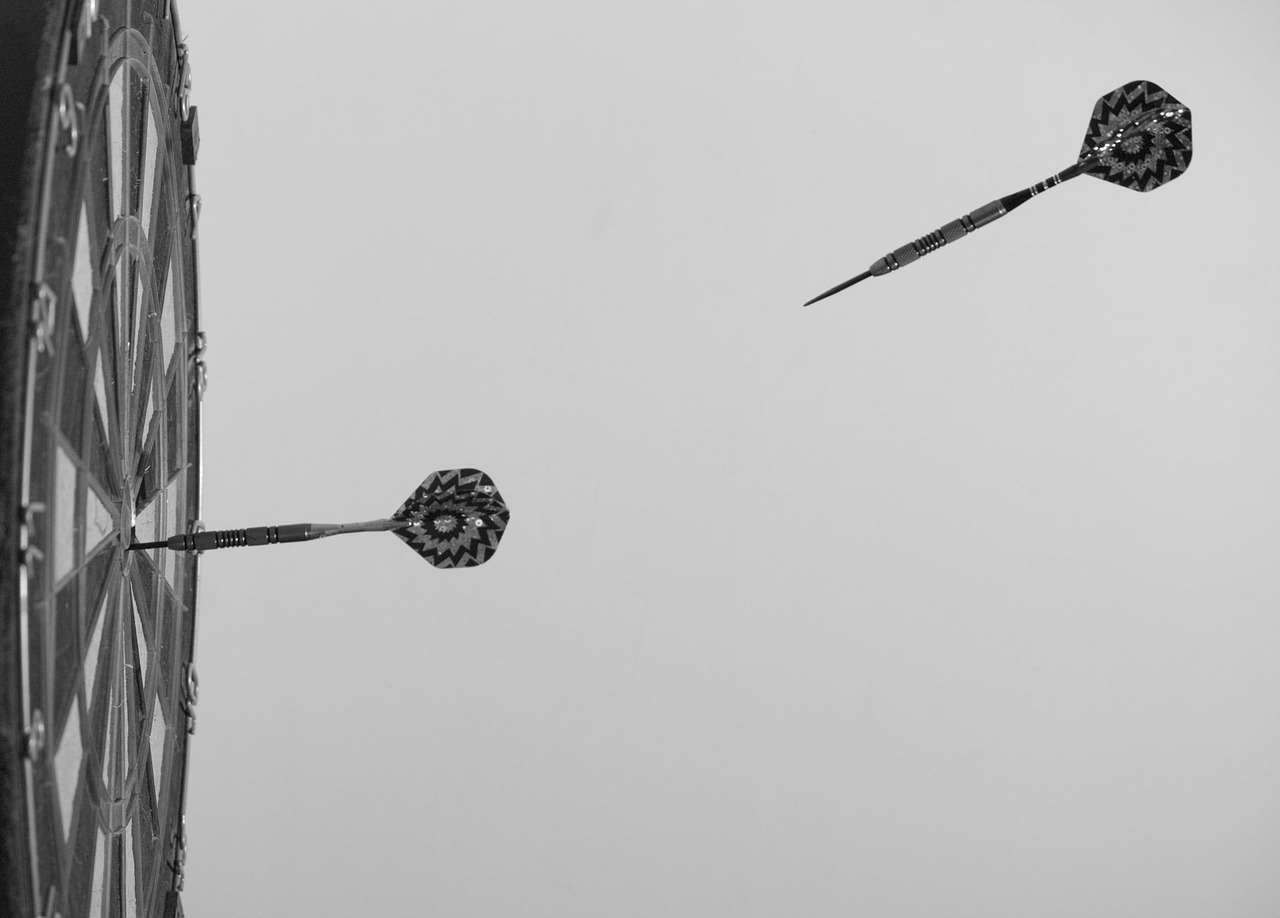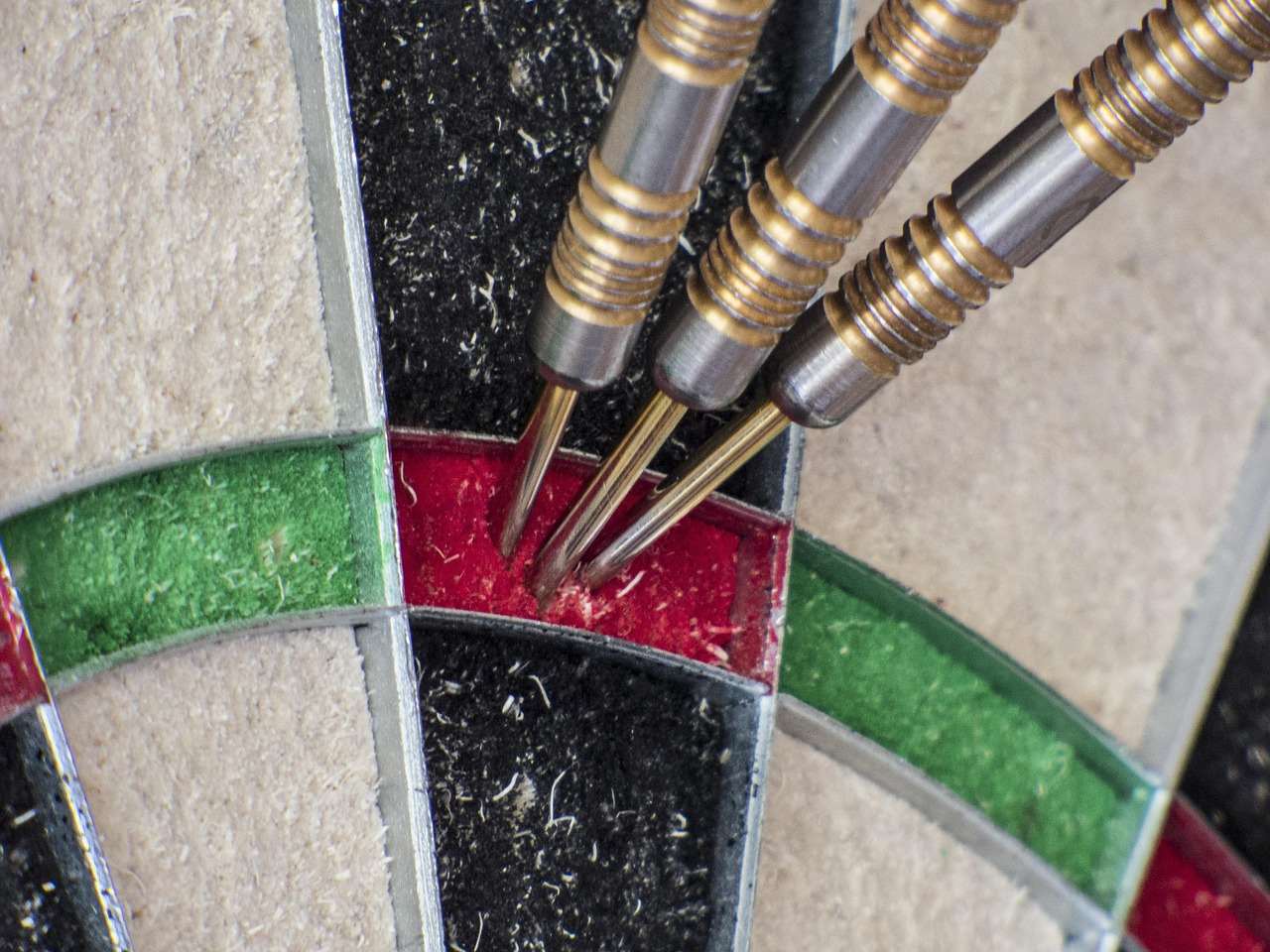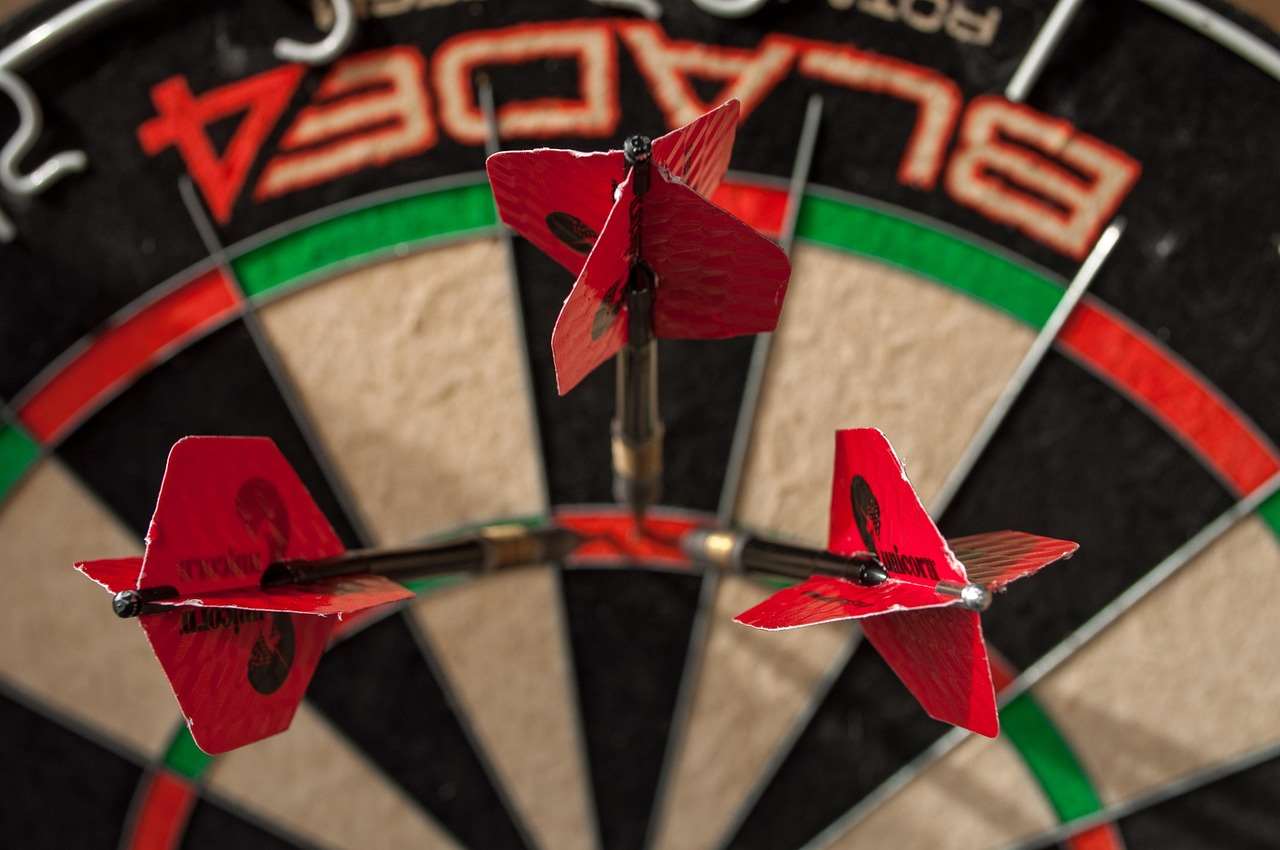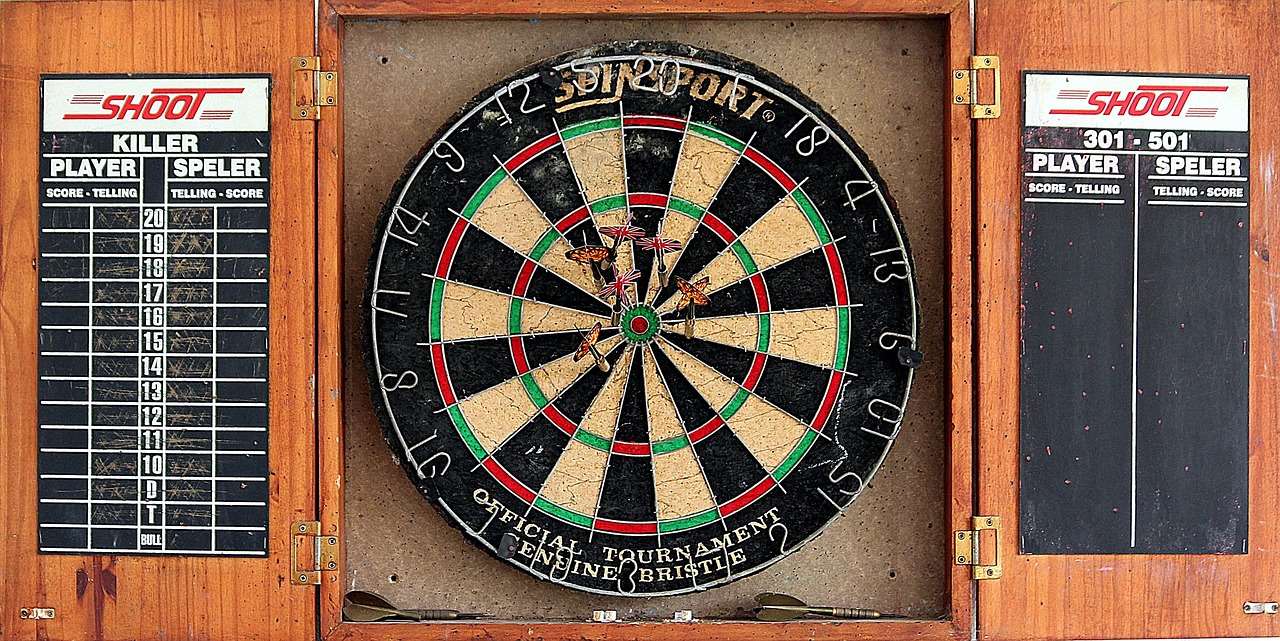Understanding the dart shaft materials history reveals a fascinating evolution from natural sources to advanced synthetics, directly impacting dart flight and player performance. This article explores that historical journey, from the earliest wooden shafts to the modern polymer and metal options available today, and examines how these changes affected the game.
⚠️ Still Using Pen & Paper (or a Chalkboard)?! ⚠️
Step into the future! The Dart Counter App handles all the scoring, suggests checkouts, and tracks your stats automatically. It's easier than you think!
Try the Smart Dart Counter App FREE!Ready for an upgrade? Click above!
A Look at Dart Shaft Materials History: From Wood to Polymers
The history of dart shaft materials is a testament to human ingenuity and the continuous pursuit of improved performance. Early darts were rudimentary, and the materials used for shafts reflected this simplicity. Let’s delve into the progression of materials and their impact.
Early Days: The Reign of Wooden Shafts
Initially, wooden shafts were the standard. Typically crafted from hardwoods like ash or elm, these shafts were readily available and easy to shape. However, they suffered from several drawbacks. Wood is susceptible to changes in humidity, leading to warping and inconsistent flight. Durability was also an issue; wooden shafts would often break upon impact or after repeated use. Furthermore, creating perfectly uniform shafts was challenging, leading to variations in weight and balance. Basic Darts Fundamentals for Beginners were different then, and the equipment itself played a larger role in a player’s overall skill.

The length of the wooden shaft also significantly impacted the dart’s trajectory. A longer shaft, for instance, generally provided more stability, but could also increase drag. These early limitations spurred the search for better alternatives.
The Rise of Metal: Aluminum and Beyond
The introduction of metal shafts, particularly aluminum, marked a significant advancement. Aluminum shafts offered greater durability and resistance to bending and breaking compared to their wooden predecessors. They also allowed for more precise manufacturing, resulting in more consistent weight and dimensions. This was a massive shift in dart equipment. However, aluminum wasn’t without its flaws. It could still bend under sufficient force, and its relatively light weight sometimes made it difficult to achieve the desired balance for some players. Plus, the threads could strip easily with frequent changes.
Over time, other metals like titanium and alloys have been explored, offering further improvements in strength-to-weight ratio. These more exotic metals are generally reserved for higher-end darts due to their increased cost.
Modern Materials in Dart Shafts: Polymer Power
Today, polymer shafts, primarily nylon and polycarbonate, dominate the market. These materials offer a compelling combination of durability, flexibility, and affordability. They are less prone to bending than aluminum and can withstand considerable impact without breaking. Nylon shafts, in particular, are known for their flexibility, allowing them to absorb some of the force of impact and reduce the likelihood of bounce-outs.
Polycarbonate shafts are generally stiffer than nylon and offer increased durability. Both materials are available in a wide range of colors, lengths, and designs, allowing players to customize their darts to their precise preferences. Experimenting with different dart setups is crucial for finding the perfect match.
Grip and Feel: The Importance of Shaft Texture
Beyond the core material, the surface texture of the shaft also plays a crucial role in grip and feel. Some shafts feature smooth surfaces, while others incorporate knurling, grooves, or other textured patterns to enhance grip and prevent slippage. The ideal texture is a matter of personal preference, with some players preferring a secure grip and others favoring a smoother release.

Many modern polymer shafts also feature rotating or spinning capabilities. This design allows the flight to rotate upon impact, reducing the chances of deflecting incoming darts. This is a popular feature among serious players who strive for maximum accuracy and minimal interference.
Shaft Length and its Impact on Flight
The length of the dart shaft is a critical factor influencing dart flight. Shorter shafts tend to provide a more direct and stable trajectory, while longer shafts can offer more forgiveness and reduce the impact of minor imperfections in the throw. The optimal shaft length depends on the player’s throwing style and grip. Adapting darts rules for small spaces: tips and tricks might even influence shaft choice depending on available space.
Experimentation is key to finding the perfect shaft length. Many players use a variety of shaft lengths during practice to determine which configuration works best for them.
The Future of Dart Shaft Materials History
The evolution of dart shaft materials history is far from over. As technology advances, we can expect to see further innovations in materials and design. Researchers are constantly exploring new polymers, composites, and metals that offer improved performance characteristics. 3D printing is also playing an increasingly important role, allowing for the creation of highly customized shafts tailored to individual player specifications.

Aerodynamics are a key consideration in modern dart shaft design. Engineers are using computational fluid dynamics (CFD) to optimize shaft shapes and surfaces for reduced drag and increased stability. This focus on aerodynamics is leading to the development of shafts with unique profiles and strategically placed textures.
Maintaining Your Dart Shafts
Regardless of the material, proper maintenance is essential for extending the life of your dart shafts. Regularly inspect your shafts for signs of wear and tear, such as cracks, bends, or stripped threads. Replace damaged shafts immediately to avoid inconsistent performance and potential injuries. Cleaning your shafts with a mild detergent can also help to remove dirt and grime, improving grip and overall performance.
- Check threads regularly: Stripped threads are a common problem, especially with aluminum shafts.
- Tighten shafts properly: Avoid overtightening, which can damage the threads or crack the shaft.
- Use shaft protectors: These small accessories can help to prevent damage from impact.

Understanding Related Keywords: Flights, Points, and Barrels
While this article focuses on dart shafts, understanding the interplay between shafts and other dart components like flights, points, and barrels is essential for optimizing overall dart performance. The weight and balance of the barrel, the shape and size of the flights, and the length and material of the shaft all work together to influence dart trajectory and stability.
Experimenting with different combinations of these components is crucial for finding the perfect setup that suits your individual throwing style. A well-balanced dart can significantly improve accuracy and consistency. A good set of dart flights is the most crucial item in this consideration.
Choosing the Right Dart Shaft: Factors to Consider
Selecting the right dart shaft involves considering several factors, including material, length, weight, grip, and budget. There’s no one-size-fits-all solution, as the ideal shaft depends on your individual preferences and throwing style.
- Material: Polymer shafts are generally a good starting point for beginners due to their durability and affordability. More experienced players may prefer metal shafts for their increased weight and stability.
- Length: Shorter shafts tend to be more stable, while longer shafts offer more forgiveness. Experiment to see which length works best for you.
- Grip: Consider the texture of the shaft and how it feels in your hand. A secure grip is essential for consistent throws.

Ultimately, the best way to choose a dart shaft is to try out different options and see what feels most comfortable and performs best for you. Visit a local dart shop or order a variety of shafts online to experiment with different configurations. Don’t be afraid to mix and match shafts with different barrels and flights to find the perfect combination.
The Impact of Dart Shafts on Professional Play
In professional darts, the choice of dart shaft can be a critical factor in achieving success. Pro players often spend considerable time experimenting with different shaft materials, lengths, and designs to optimize their performance. Even minor adjustments to shaft configuration can have a noticeable impact on accuracy and consistency at the highest levels of competition. Simplified 501 game rules for novice players don’t change just because a professional is using special equipment, but the skill level certainly does.
Many professional players have signature dart setups that are carefully tailored to their individual throwing styles. These setups often include specific shaft materials, lengths, and flights that have been refined over years of practice and competition. The level of attention to detail in professional darts highlights the importance of choosing the right equipment for optimal performance.
Conclusion: Dart Shaft Materials History and Your Game
From humble wooden beginnings to sophisticated polymer and metal options, the dart shaft materials history showcases a constant quest for improved performance. Understanding this evolution allows players to make informed choices about their equipment, ultimately enhancing their game. Whether you’re a casual player or a seasoned professional, experimenting with different dart shaft materials and configurations can unlock new levels of accuracy and consistency. So, take the time to explore the options and find the perfect shafts to elevate your dart game! Ready to take your game to the next level? Visit our online store today to explore a wide selection of dart shafts and find the perfect fit for your throwing style!
Hi, I’m Dieter, and I created Dartcounter (Dartcounterapp.com). My motivation wasn’t being a darts expert – quite the opposite! When I first started playing, I loved the game but found keeping accurate scores and tracking stats difficult and distracting.
I figured I couldn’t be the only one struggling with this. So, I decided to build a solution: an easy-to-use application that everyone, no matter their experience level, could use to manage scoring effortlessly.
My goal for Dartcounter was simple: let the app handle the numbers – the scoring, the averages, the stats, even checkout suggestions – so players could focus purely on their throw and enjoying the game. It began as a way to solve my own beginner’s problem, and I’m thrilled it has grown into a helpful tool for the wider darts community.